What does 'flagging' mean and is it still practiced today?
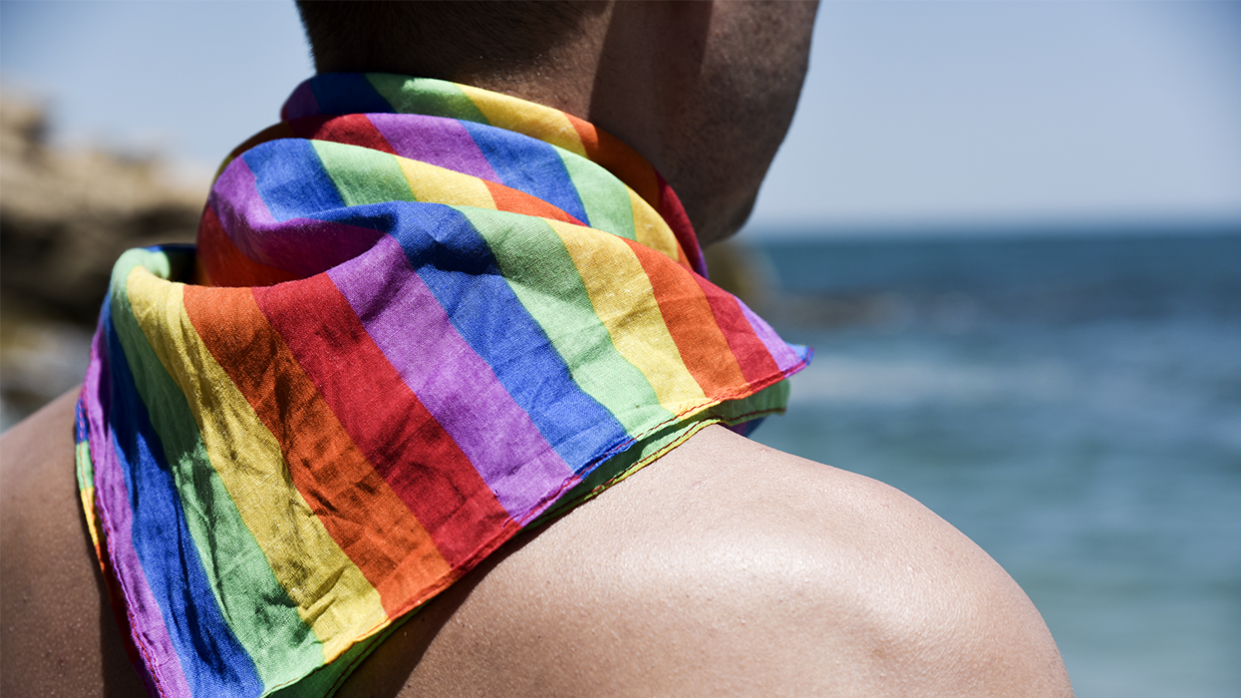
The colors you choose have a lot more to do with sexual preferences than you may think...
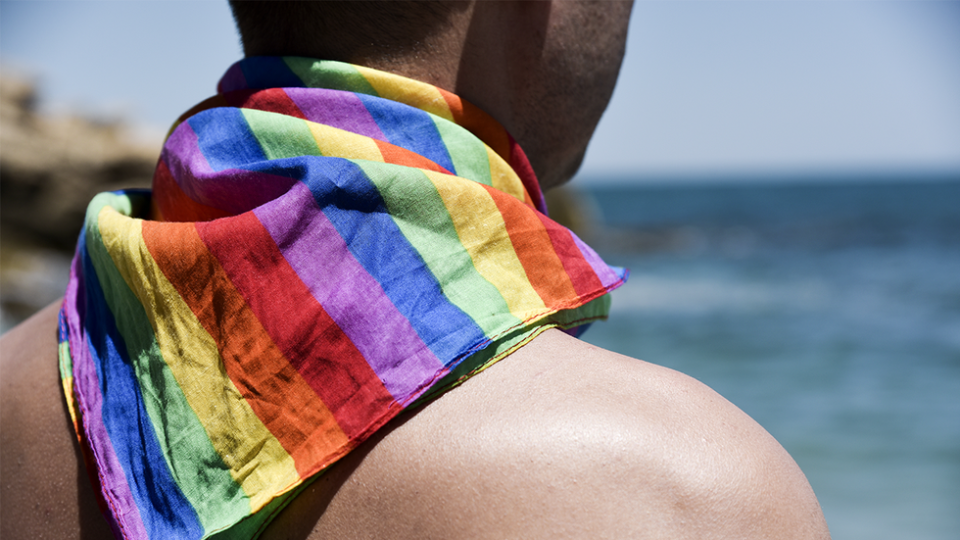
nito/Shutterstock
These days, members of the LGBTQ+ community have a lot to be grateful for, despite the persecution we still face. It’s hard to believe that not long ago, the act of sodomy would land you in jail and queer spaces had to be kept hush-hush. We may complain about the infiltration of cis straight men and women in our clubs, but there was a time where being open about your sexuality could get you into a lot of trouble.
Because queer people had to stay silent, a lot of communication, particularly with gay men, had to be nonverbal. Questions like “into” and “looking for” might seem like annoying conversation starters on the apps now, but anytime before the 2010s, those one-word intros were basically all you had.
Enter the culture of cruising, which is still an activity popular with gay men that involves picking someone up in public, usually with little to no words involved.
We’re not going to dive too deeply into cruising too much today, but rather talk about a flagship (pun intended) tool that gay men used to help them connect with other gay men before gay bars and dating apps were even a blink of a possibility: Flagging.
What is flagging?
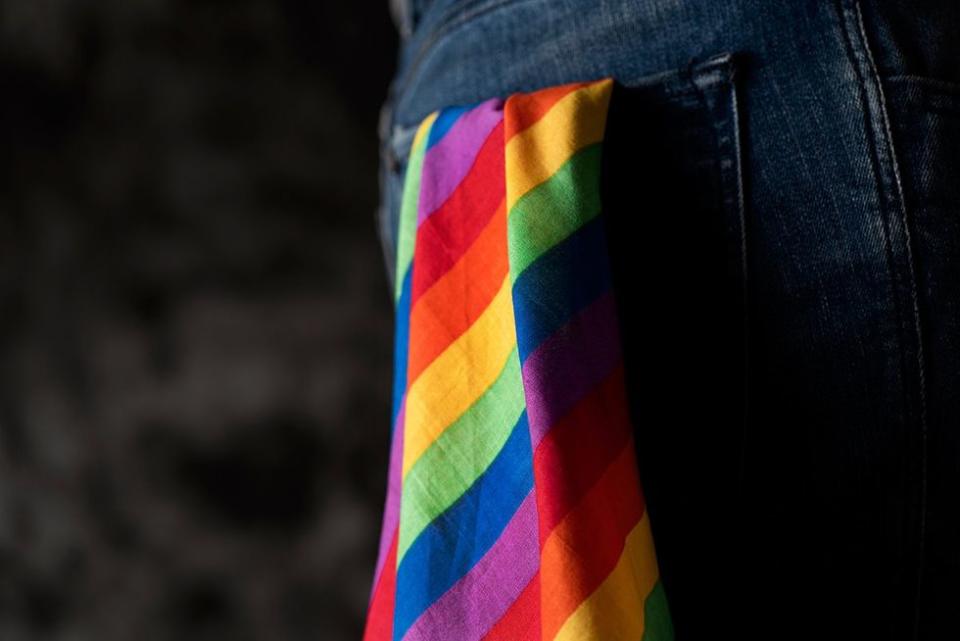
nito/Shutterstock
The “hanky code,” also known as “flagging,” was — and still is, though not as prevalent — a way for men to wordlessly share with other men what their sexual preferences are based on the color of bandana you have hanging outside of your back pocket, as well as which pocket it's in.
Before you run off to grab your nearest hanky to join the group fun, there’s a little more to it than that. You don’t just put a hanky in your pants and that’s that. Everything about the hanky matters, from what color it is, what pocket it hangs from, and what kinks or fantasies you might be into.
When did flagging start?
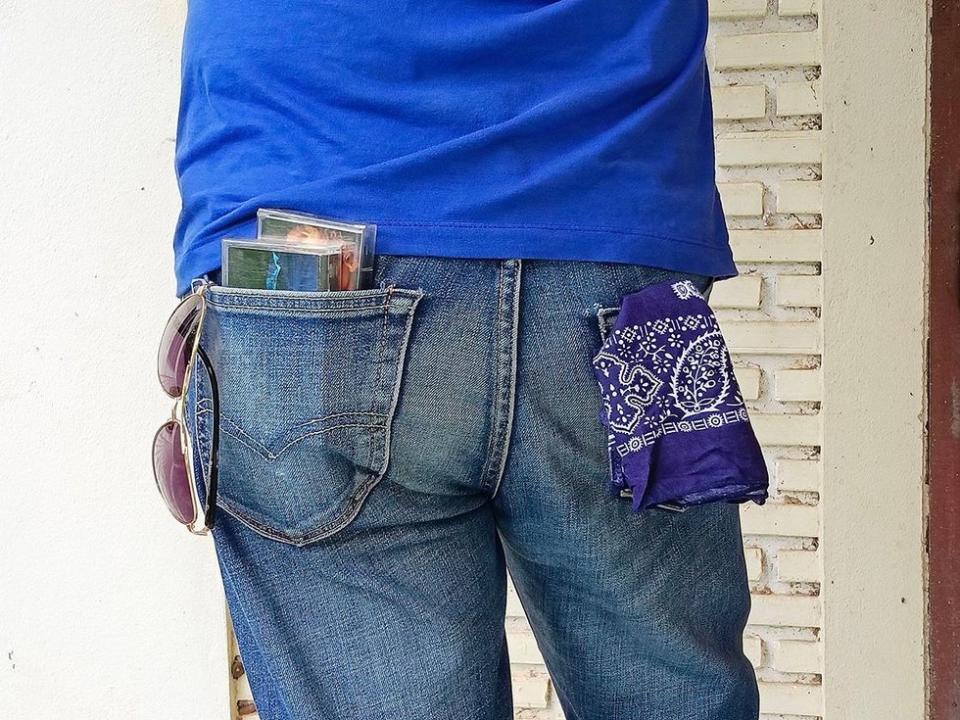
Thransin chanthakarn/Shutterstock
A lot of things happened after the events of Stonewall Uprising and leading into in the early '70s that put the topic of queer rights more at the forefront.
Related: What is the Stonewall Uprising and where would we be without it?
The system around flagging was formulated in the '70s and was highly used among the leather and BDSM communities because gay men wanted an easier way to find and recognize each other.
The exact pinpoint of the “when and how” flagging actually started is debatable depending on location, but usually agreed that New York City and San Francisco played a vital role in its creation. In New York, an article from the Village Voice (the outlet that also sparked the Uprising) made a joke about how the hanky code would be beneficial, unknowing that their commentary would be taken seriously. According to The Mayor of Folsom Street: The Auto/Biography of "Daddy Alan" Selby aka Mr. S the founder of Mr. S Leather in San Francisco, Alan Selby, popularized the concept on the West Coast after an order mishap from the Leather 'n' Things partners in 1972 led to an excess in handkerchiefs they needed to get rid of.
Prior to that, it's thought the idea of men wearing bandanas stretches back to the Gold Rush times in San Francisco, where men developed the idea of wearing a red or blue bandana to indicate their sexual preference, and it was created because of the shortage of women. When men would go square dancing, their handkerchiefs were indicative of the role they prefer in the dance.
What do the different colors represent?
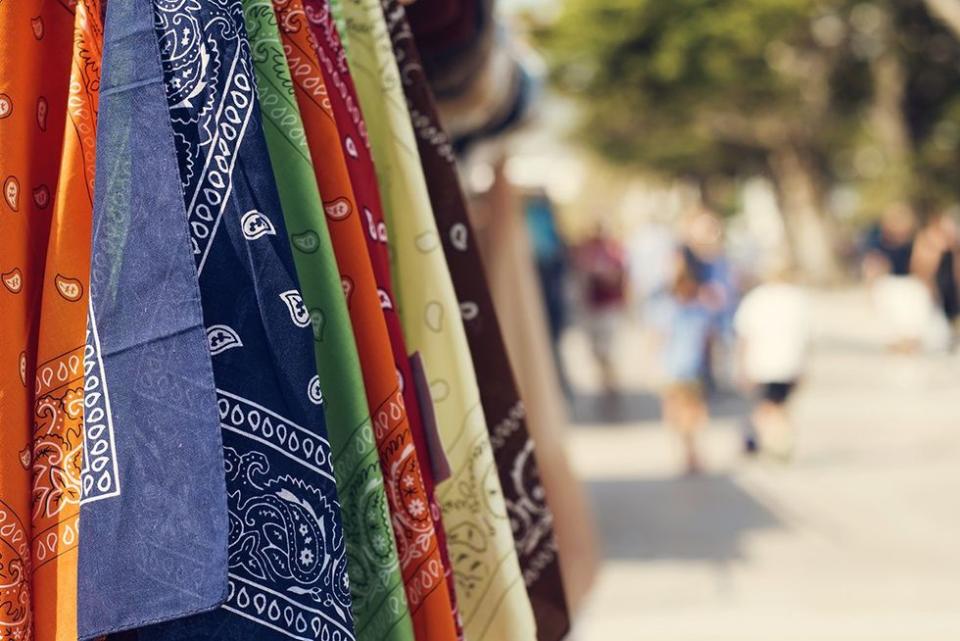
nito/Shutterstock
There are various books and projects that are said to have influenced the color coding system, including Larry Townsend’s The Leatherman’s Handbook II from 1983 — the first edition did not include the color variations. Hal Fischer's Gay Semiotics project in San Francisco also put a visual conception to the gay vernacular and had imagery that included information about flagging.
Additionally, a man named Bob Damron traveled around the country in 1964 and kept a record of his experiences at gay bars, which he produced into Bob Damron's Address Book. In it, his depiction of flagging goes a little deeper to indicate things like penis size or penis size wanted and other various identifications.
You can find a more exhaustive list that breaks down the different shades of colors at The Saint Foundation, and Onyx NY Northeast offers other perspectives that include whether you’re carrying drugs or have a car. In the meantime, here's the basic color list and desire wanted as written by Townsend:
Black - S & M
Blue (Dark) - Anal Sex
Blue (Light) - Oral Sex
Brown - Scat play
Green - Hustler
Grey - Bondage
Orange - Anything goes
Purple - Piercing
Red - Fisting
Yellow - Piss play
Remember, this is not an exhaustive list, and it’s grown a lot over the years, especially as this code continues in the modern day.
As far as placement goes, generally, whatever handkerchief you put in your left pocket identifies you as a top, and whatever is in your right identifies you as a bottom. Thus, if you had a grey flag in your left pocket, you’d be a bondage top, and if you had a dark blue handkerchief in your right pocket, you’re a bottom who would like to be topped.
What is flagging like in the modern day?
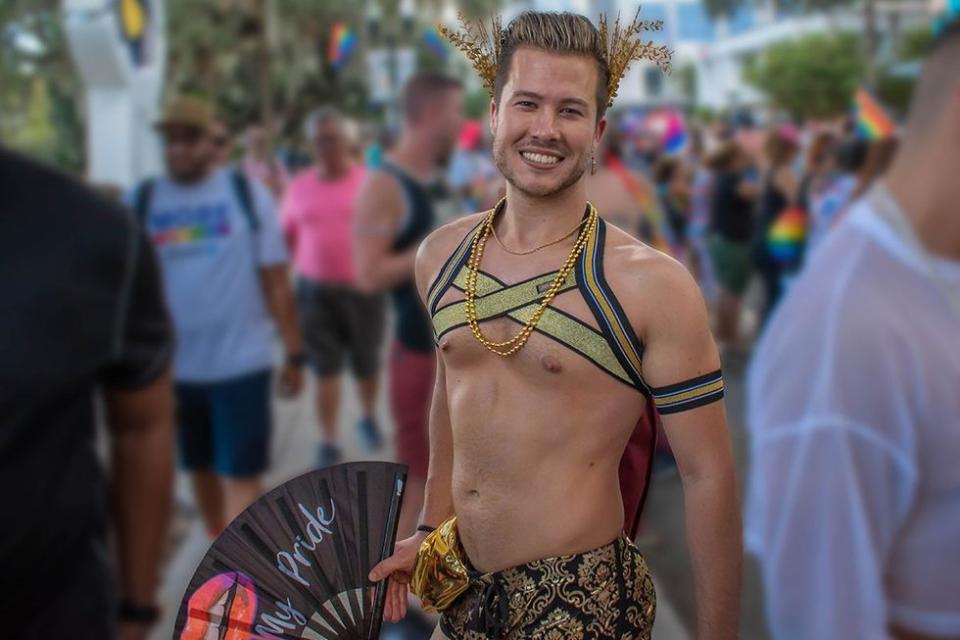
VIAVAL TOURS/Shutterstock
Although it still exists in some fashion, it’s not hard to figure out that flagging isn’t as common as it once was. Handkerchiefs aren’t something you see hanging out of back pockets in gay bars with every man you pass, but that doesn’t mean the practice is gone forever.
Unfortunately, it may also be a practice that comes back sooner rather than later, and not for the reasons we’d want it to. The hanky code was a different form of fun and flirting, but it was also crucial for gay men's protection from the public. As more and more people start to bring back ancient laws persecuting queer people, it may be something we have to utilize again to keep ourselves safe, and not just something that's flirty.
Apart from practicing the hanky code in public, we also live in the world of social media. Plenty of people have brought the practice to online spaces like Instagram and TikTok, which helps share their interests with a wider audience. The expansion of the hanky code has also made way for new colors and fabrics, including leather or lace. It also has gone on to encompass things like harnesses or singlets, with the color of choice derived from the hanky code.
Related: This viral Sniffies cruising mystery has TikTok viewers enthralled
Should I be leery about the color(s) I'm wearing?
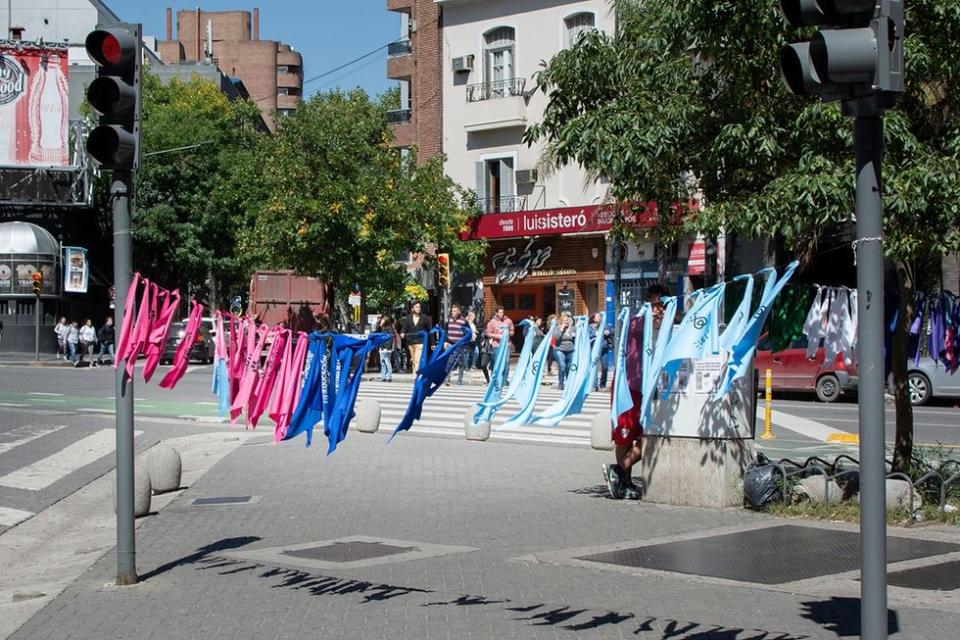
Ale Grutta foto/Shutterstock
If you participate in flagging, sure. If not, don’t put too much thought into it. The practice of flagging isn’t as common as it once was, so it’s not as likely that you’ll be approached based on the colors you’re portraying, especially if it’s with a harness or a jockstrap. If you put a handkerchief in your back pocket and let it hang out, however, that specific action is on you. If flagging isn't what you're trying to do, just be mindful and do your best to avoid having something hanging out of your back pocket.
Whether you participate in flagging or not, always remember consent is sexy. If you’re not wearing a particular color for a particular reason and someone thinks you are, be gentle when you tell them they’re mistaken. If you are wearing a particular color and someone recognizes that, you still have the power to say no. You're always in control, so get out there, explore, and have fun!


